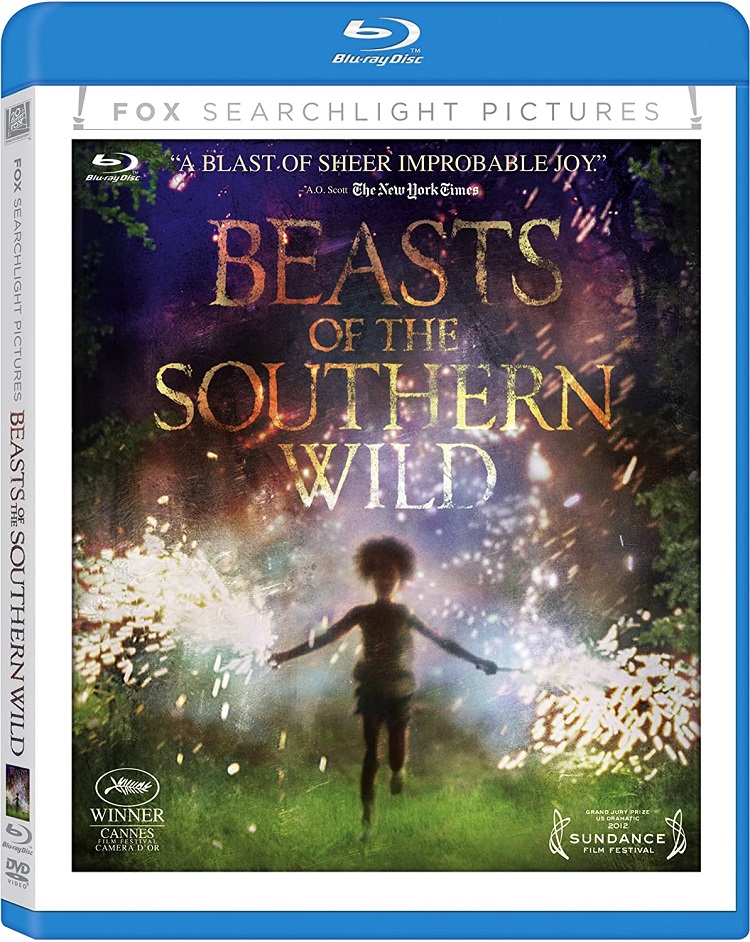
Director Benh Zeitlin‘s film is this year’s Little Indie That Could, a micro-budgeted, challenging art house effort that defied long odds to first gain distribution and then achieve substantial critical acclaim and a fair amount of public knowledge. That’s reason enough for some amount of adulation, as adult dramas have been in deep freeze at the megaplex for so many years now that it’s comforting to see one break through every so often. As for whether it’s worthy of its high profile, that’s entirely up to how much viewers are open to flights of fancy and tales of swamp people.
The movie centers on the relationship between a plucky young girl named Hushpuppy and her tough but terminally ill father named Wink. So far pretty basic, but the story is set in the deep, deep backwoods of the Louisiana swamps before, during and after a Katrina-like hurricane demolishes the area. Hushpuppy and her neighbors aren’t just poor, they’re like the tribe that society forgot, living in abysmal shacks with no apparent jobs, stores, or modern conveniences. Seemingly everything they have they scavenge, repurpose, or catch, living hand to mouth off the land. Yes, they even go hand fishin’, furthering the persistent Swamp People vibe.
When the storm wipes out their community, daughter and father are forced into hiding with the rest of their hick neighbors to avoid being forcibly removed to a federal disaster shelter. Their joyous revelry in their destroyed town is eventually put to an end by a federal search team, but the obstinate swamp folks don’t cotton to being forcibly removed and ultimately escape back to their homeland.
That’s the literal story, but fanciful elements are weaved into the fabric of the film mostly via the recurring appearance of huge rampaging horned hogs who seem somehow linked to Hushpuppy. Is she just dreaming about them? Are they an allegory for the swamp people, or the impending death of her father, or the devastating effects of the hurricane? That’s up to you, but their only direct interaction with her near the end of the film is an intriguing scene however you interpret it.
Other whimsical elements include the character names (Really? Hushpuppy and Wink?), the romanticized scenes of the hicks at play (which yielded the sparkler shot on the cover) that clumsily reinforce how happy they are in their dire surroundings, and the shacks and transportation methods that are so crazily ramshackle they could only be the product of the film’s construction crew (as proven in the bonus features). It seems odd to use real non-actors from the area, but then stage their settings and interactions in hyper real fashion, but the approach does somewhat allow viewers to avoid lapsing into depression about the real Katrina debacle. This isn’t a documentary, and it’s not an indictment of FEMA’s Katrina response, it’s just a magic-infused slice of life tale that happens to be set in a hurricane-ravaged bayou. Zeitlin aims to craft a celebration of life out of a completely demolished community and family unit, and while it wasn’t particularly effective for me, I can appreciate his drive to bring this unique project to the screen.
Much ink has been spilled about the outstanding performance of young Quvenzhane Wallis. Too much perhaps, because it was built up so much for me in advance that I wasn’t impressed. She’s clearly an amateur, which is fine for the role, but also completely fails to emote save a few poignant tears for dear old dad. Yes, I get it, she’s supposed to be playing a tough, closed-off character, and she was only six at the time, but her approach is so monotone and disaffected that it’s hard to root for her. Frankly, the only time I understood her appeal was during her audition and rehearsal footage generously provided in the bonus features, where we get to see her make a concerted effort to connect with the producers and the material. In other words, she’s far more interesting in person than in character.
Those bonus features also include a lengthy making-of video that details the struggles undertaken to bring the project to screen. Interestingly, the footage in that feature had far better technical quality than the film itself, highlighting the lack of reason to spring for the Blu-ray version. The film is grainy, sometimes poorly lit, and if I correctly recall a story I read around its theatrical release, was shot in only 16mm, leaving a final product that is more than adequately served by DVD release only. The Blu-ray combo pack thoughtfully includes that DVD, along with a digital copy.